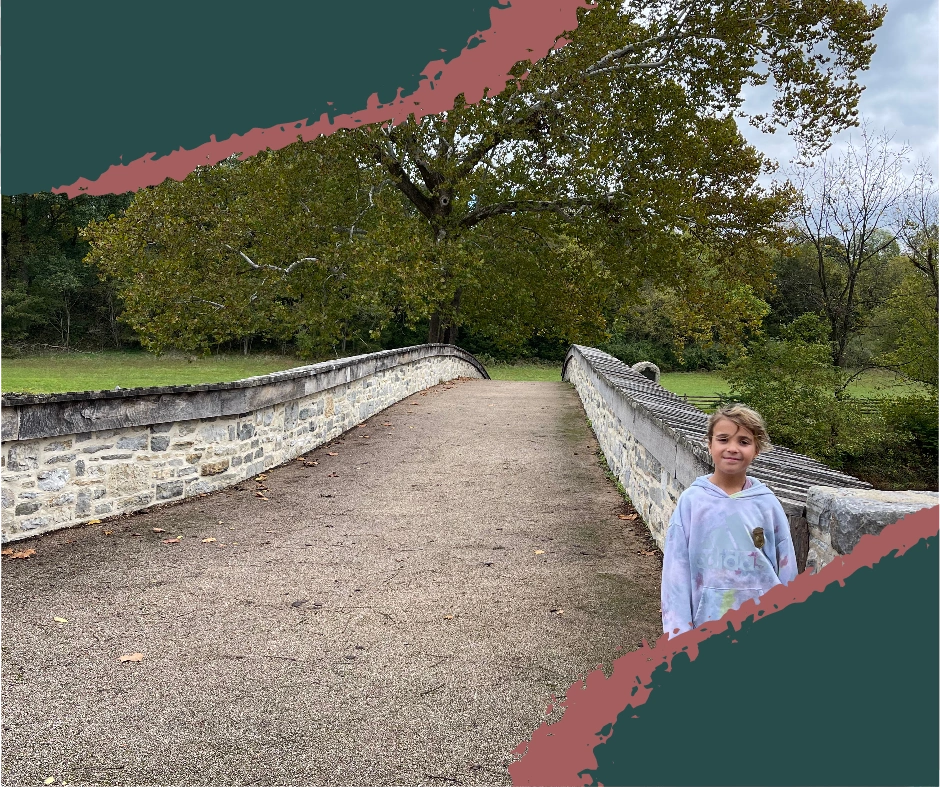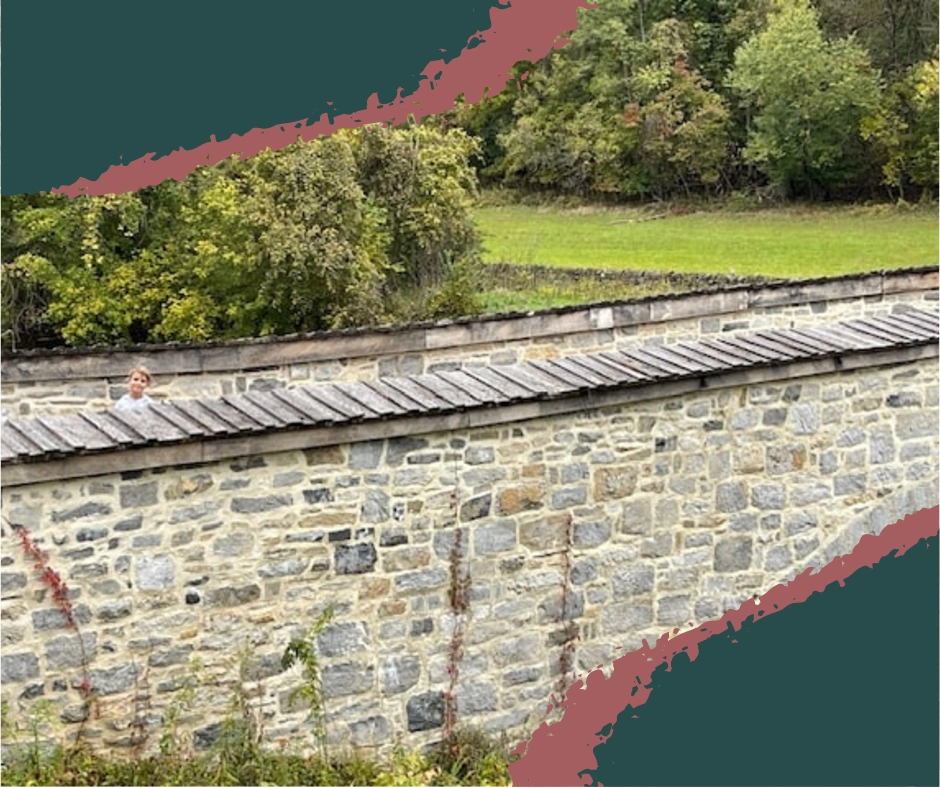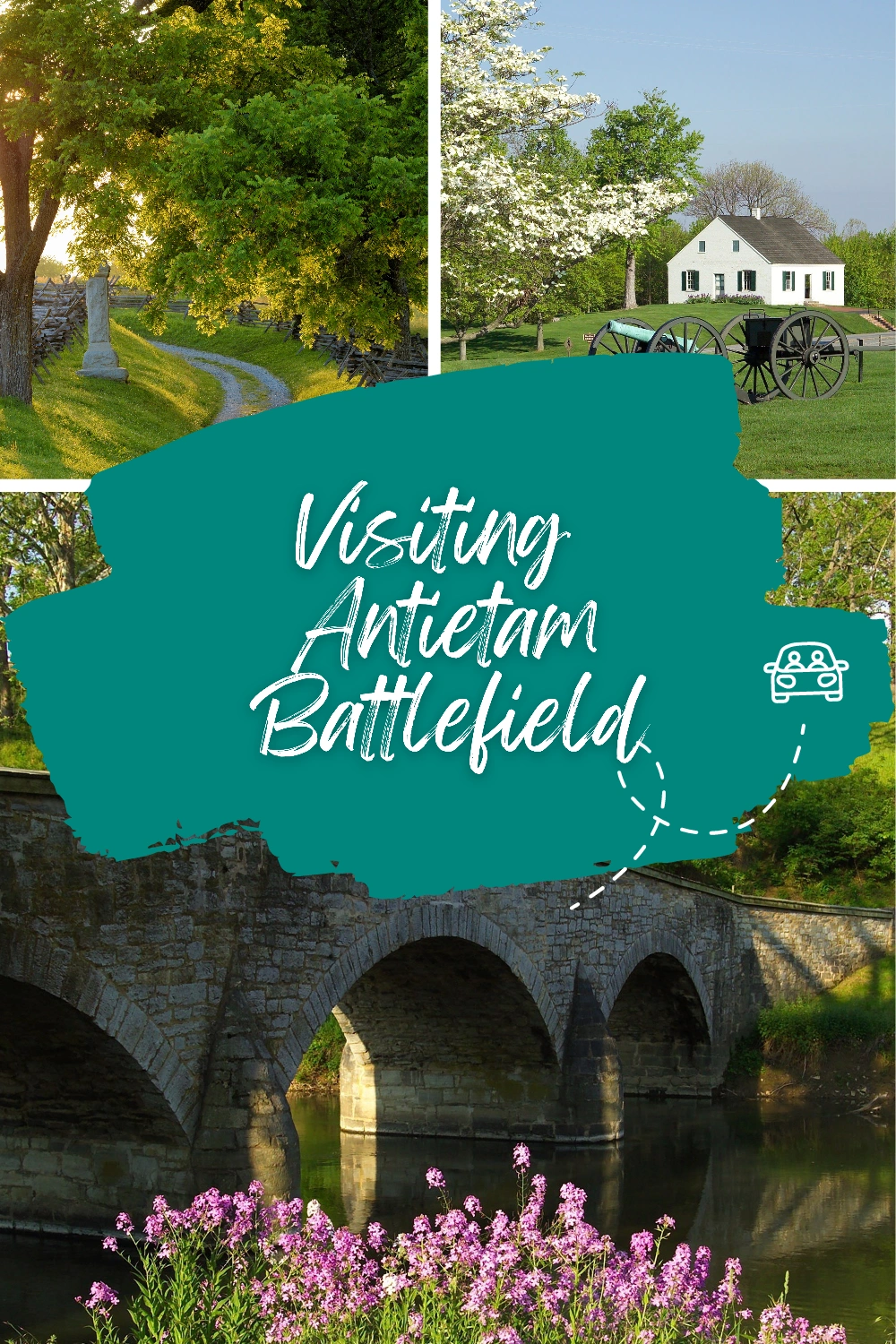Exploring Antietam: Top Historical Sites and Hiking Trails
The Battle of Antietam, on September 17, 1862, marked the bloodiest single day in American history, with over 22,000 casualties. This critical battle stopped the Confederate invasion of the North and led to President Lincoln’s issuance of the Preliminary Emancipation Proclamation. In this article, discover the historical sites and important events that make Antietam a pivotal moment in American history.
Table of Contents
Key Takeaways from Antietam
The Battle of Antietam, fought on September 17, 1862, was the bloodiest single-day battle in American history with about 22,720 casualties!
Key locations like Dunker Church, Bloody Lane, and Burnside’s Bridge are essential stops for understanding the battle’s historical significance and impact.
Antietam National Battlefield preserves the site for future generations with ongoing conservation efforts and over 300 historical markers highlighting the critical moments of the battle!

The Prelude to Antietam
Before the gunfire and bayonets clashed at Antietam, a series of strategic maneuvers set the stage for a defining moment in the Civil War. General Robert E. Lee’s Confederate Army aimed to shift the war’s momentum by invading Northern territory. This bold move sought to bring the fight to Union soil, influence Northern public opinion, and gain European recognition for the Confederacy.
As the Confederate forces moved into Maryland, the Union Army, led by General George B. McClellan, prepared for the impending clash. The lead-up to the Battle of Antietam was filled with tension and anticipation, as both sides readied themselves for a confrontation that would shape the nation’s future.
The stage was set for a battle that would become a turning point in the Civil War, drawing the attention of the entire country and beyond.
The Confederate Invasion
General Lee aimed to shift the battleground to Union soil, hoping to influence political outcomes and gain international support for the Confederacy. Riding high on recent victories, the Confederate Army sought to capitalize on their momentum and boost Southern morale. However, despite entering Maryland, a slave-holding state, Lee’s forces met significant resistance from Union troops.
A critical moment in the campaign came when two Union soldiers found a lost copy of Lee’s detailed troop movements, known as ‘Special Order 191’. This intelligence coup gave General McClellan a strategic advantage, allowing the Union Army to anticipate and prepare for Lee’s plans. The stage was set for a monumental clash along Antietam Creek.
Union Intelligence Breakthrough
The discovery of Lee’s battle plans, found wrapped around cigars by Union soldiers, marked a pivotal moment in the Civil War. This serendipitous find gave General McClellan crucial insights into Lee’s strategy, enabling the Union Army to mount a more effective defense and counterattack. It provided a significant boost to Union morale, setting the stage for the upcoming battle.
With the element of surprise, Union forces strategically positioned themselves to confront Lee’s army. This breakthrough influenced immediate tactics and had long-lasting implications for the Union’s war strategy. Anticipation built as both armies prepared for one of the bloodiest days in American history.
The Battle Begins: September 17, 1862
At dawn on September 17, 1862, the Battle of Antietam began, marking the first major Civil War engagement on Union soil. The early morning light revealed the strategic positions of both armies near Sharpsburg, Maryland, with significant fighting erupting around key locations such as Miller’s Cornfield and Dunker Church. The battle’s initial ferocity set the tone for the rest of the day.
The initial Union assaults targeted the Confederate left flank, aiming to break through and deliver a decisive blow. The conflict’s intensity was unmatched, as thousands of soldiers clashed in a brutal struggle that left a lasting legacy, ultimately leading to a union victory.
The day unfolded in phases, each with its own challenges and heroics, as the battle raged from dawn until dusk.
Morning Phase
In the morning phase, Union forces, particularly Major General Hooker’s I Corps, launched a powerful assault at dawn. The focus was Miller’s Cornfield, where intense fighting erupted as Union soldiers clashed with Confederate defenders led by Stonewall Jackson. The cornfield became a scene of chaos and carnage, with significant casualties on both sides.
Despite fierce resistance, Union troops pressed on, determined to break through Confederate lines. The morning’s brutal combat set the stage for the subsequent battle phases, as both sides struggled for control over key positions. The sacrifices in Miller’s Cornfield would be remembered as some of the most intense fighting of the day.
Afternoon Phase
In the afternoon phase, focus shifted to an infamous location: Bloody Lane. Here, Union forces aimed to penetrate the Confederate center, leading to concentrated and brutal fighting. The sunken road, later known as Bloody Lane, became a killing ground as Union soldiers faced fierce resistance from entrenched Confederate troops.
The fighting at Bloody Lane featured relentless assaults and staunch defenses, resulting in staggering casualties. This pivotal moment highlighted the determination and desperation of both sides, as the Union struggled to gain ground and the Confederates fought to hold their position.
The afternoon combat left Bloody Lane littered with the fallen, a somber testament to the day’s ferocity.
Evening Phase
The day’s final efforts took place at Burnside’s Bridge, where Union forces under General Ambrose Burnside attempted to push back Confederate defenses. The bridge spanning Antietam Creek was a critical crossing point the Union needed to capture to advance. However, Confederate troops fiercely defended it, delaying the Union’s advance for several hours.
As evening approached, the timely arrival of Confederate reinforcements under A.P. Hill turned the tide. The Union’s final push to capture Burnside’s Bridge ultimately failed, forcing their withdrawal and ending the day’s brutal fighting.
The Battle of Antietam, though tactically inconclusive, had profound strategic implications that shaped the course of the Civil War.
Key Locations on the Antietam Battlefield

The Antietam battlefield is rich with history, dotted with key locations that witnessed the intense combat of September 17, 1862. From churches and roads to bridges and fields, each site tells part of the battle’s story and its impact. For visitors today, these landmarks offer a tangible connection to the past, allowing them to walk in the footsteps of those who fought and died here.
Exploring these sites provides a deeper understanding of the battle’s significance and the sacrifices made by Union and Confederate soldiers. The following subsections detail three of the most important locations on the battlefield: Dunker Church, Sunken Road (Bloody Lane), and Burnside’s Bridge.
Dunker Church
Built in 1852, Dunker Church became a central point during the Battle of Antietam. This humble structure served as a pivotal landmark for Union attacks and a rallying point for troops throughout the day. Its strategic location made it a focal point of intense fighting, as both sides vied for control of the surrounding high ground.
After the battle, Dunker Church was used as a makeshift hospital, tending to wounded soldiers who had fought fiercely around it. Today, it stands as a poignant reminder of the battle’s human cost and the resilience of those who endured its horrors.
Sunken Road (Bloody Lane)
Sunken Road, known as Bloody Lane, was the site of some of the battle’s most brutal close-quarters combat. This 1.6-mile loop trail follows the path of Union soldiers as they advanced toward a significant Confederate position. The fighting here was intense, with heavy casualties on both sides as they struggled for control.
The battle at Bloody Lane significantly contributed to the overall casualties of the Battle of Antietam, marking it as one of the deadliest locations on the field. Walking this trail today offers a somber reflection on the sacrifices made and the determination of the soldiers who fought here.
Burnside’s Bridge
Burnside’s Bridge was a strategic choke point during the Battle of Antietam, where a small Confederate force successfully delayed a much larger Union army from crossing for several hours. The bridge was crucial for Union forces to cross Antietam Creek and advance. The fierce fighting that ensued highlighted its strategic importance.
Despite repeated assaults, the Union forces couldn’t secure the bridge until late in the day, significantly impacting their ability to press their advantage. Today, Burnside’s Bridge stands as a testament to the strategic challenges and fierce resistance faced during the battle.
Casualties and Aftermath
The Battle of Antietam, fought on September 17, 1862, is remembered as the deadliest single-day battle in American history. The scale of the casualties and the fighting’s intensity left an indelible mark on the nation. The battle influenced military strategies and had significant political and social repercussions.
Antietam National Battlefield serves as a vital reminder of these sacrifices, preserving the site and educating future generations about the profound impact of this historic conflict. The following subsections cover the casualty figures and the strategic outcomes that followed the battle.
Casualty Figures
The Battle of Antietam resulted in approximately 22,720 total casualties, making it one of the bloodiest single-day battles in American history. The Sunken Road, or Bloody Lane, was particularly devastating, with the ground littered with fallen soldiers from both sides. This intense fighting contributed to the staggering casualty figures, highlighting the battle’s brutality.
The high number of casualties underscored the ferocity of the combat and the significant loss of life on both sides. The scale of the human cost serves as a sobering reminder of the sacrifices made during the Civil War.
Strategic Outcomes
Despite the high casualties, the Battle of Antietam provided President Lincoln with the political momentum to issue the Preliminary Emancipation Proclamation. This strategic victory allowed Abraham Lincoln to shift the war’s focus toward ending slavery, garnering support from abolitionists and changing the war’s moral landscape.
The battle also led to significant changes in military leadership, with President Lincoln replacing General McClellan with General Burnside due to dissatisfaction with McClellan’s performance. The discovery of Lee’s battle plans and the Union’s ability to leverage this intelligence marked a turning point in the Civil War, influencing future strategies and engagements.
Preserving History: Antietam National Battlefield
Established by Congress in 1890, Antietam National Battlefield was created to preserve the history of the battle and commemorate the soldiers who fought there. The site serves as a living memorial, honoring the memory of those who sacrificed their lives during the Civil War. The battlefield features various significant sites, including monuments, markers, and the National Cemetery, where nearly 4,800 Civil War soldiers are interred.
Preserving this historical landscape ensures that future generations can learn about and reflect on the events of September 17, 1862. The following subsections will explore the historical markers and conservation efforts that maintain the battlefield’s integrity and educational value.
Historical Markers
The Antietam National Battlefield is dotted with over 300 historical markers that highlight significant events and figures from the Battle of Antietam. These markers provide important context for visitors, documenting key moments and individuals who played crucial roles during the battle. Among these, 124 markers are dedicated to Union forces and 88 to Confederate forces, offering a balanced perspective on the battle’s unfolding.
Walking the trails and reading these markers allows visitors to gain a deeper understanding of the battle’s complexity and the human stories behind it. These markers not only serve as educational tools but also as poignant reminders of the sacrifices made on this hallowed ground.
Conservation Efforts
Ongoing conservation initiatives at Antietam National Battlefield focus on maintaining the landscape and protecting historical resources. These efforts are crucial in preserving the integrity of the battlefield, ensuring that it remains a place of reflection and education for future generations. Organizations like The Conservation Fund play a significant role in these initiatives, contributing to the protection of key historical sites and lands.
Conservation efforts include restoring and preserving historical features, maintaining trails, and expanding educational resources for visitors. These initiatives help to keep the history of Antietam alive, allowing visitors to experience the battlefield much as it was during the Civil War.
Hiking and Exploring Antietam Today
Hiking the Antietam National Battlefield offers a unique opportunity to walk through history while enjoying the natural beauty of the area. The battlefield features various significant sites, including monuments, trails, and historical buildings that tell the story of the battle. Visitors can immerse themselves in the history of Antietam while exploring the scenic trails that connect these historical sites.
The trails provide a profound insight into the experiences of those who fought here, offering a chance to reflect on the battle’s significance and the sacrifices made. The following subsections will detail some of the most popular trails and provide practical tips for visitors.

Popular Trails
Antietam offers a variety of popular hiking trails that allow visitors to explore the historical battlefield and its surroundings. Hikers can visit major battle sites such as Dunker Church, Bloody Lane, and Burnside’s Bridge while exploring the trails. The trails vary in difficulty, accommodating both beginners and experienced hikers, and span several miles, providing ample opportunity for exploration and reflection.
The scenic views of the landscape enable visitors to appreciate the natural beauty of the area alongside its historical significance. These trails offer a unique blend of history and nature, making them a must-visit for anyone interested in the Civil War or outdoor activities.
Visitor Tips
When planning a visit to Antietam National Battlefield, it’s important to come prepared. The best times to visit are during daylight hours, when exploration is allowed. Visitors should bring water, snacks, comfortable walking shoes, and a map of the trails to ensure a pleasant and informative experience.
Taking these precautions will help you fully enjoy the historical and natural beauty of the battlefield. Whether you’re hiking for a few hours or spending the entire day exploring, these tips will ensure you have a memorable and educational visit.
Summary
Exploring Antietam National Battlefield offers a profound journey through one of the most significant events in American history. From the prelude to the battle and the fierce combat phases to the key locations that witnessed the bloodiest day, this site encapsulates the essence of the Civil War. The ongoing preservation efforts ensure that this historical treasure remains intact for future generations to learn from and reflect upon.
By walking the trails and visiting the landmarks, you not only gain a deeper understanding of the Battle of Antietam but also connect with the past in a meaningful way. The blend of history and nature makes Antietam a unique destination for both history enthusiasts and outdoor adventurers. May your visit to Antietam be both enlightening and inspiring, honoring the memory of those who fought and fell on this hallowed ground.

Frequently Asked Questions
What was the significance of the Battle of Antietam?
The Battle of Antietam is remarkable for being the deadliest single-day battle in American history, and it gave President Lincoln the political boost he needed to issue the Preliminary Emancipation Proclamation! What an incredible turning point in the fight for freedom!
What are some key locations to visit at Antietam National Battlefield?
You’ve got to check out Dunker Church, Sunken Road (Bloody Lane), and Burnside’s Bridge—each spot is packed with history and excitement from the battle! It’s an amazing experience to walk through such significant historical sites! Also, it is not too far from Gettysburg for an additional history lesson!
How many casualties were there at the Battle of Antietam?
Wow, the Battle of Antietam had around 22,720 total casualties, making it one of the bloodiest single-day battles in American history! Isn’t it incredible to think about the impact it had?
What are the best times to visit Antietam National Battlefield?
The best times to visit Antietam National Battlefield are during daylight hours when you can fully enjoy hiking and exploring the rich historical sites! It’s an adventure waiting to happen!
Are there any hiking trails at Antietam National Battlefield?
Absolutely! Antietam National Battlefield boasts several thrilling hiking trails that connect key battle sites and provide stunning views of the area. Get ready to explore history and nature all in one adventure!



